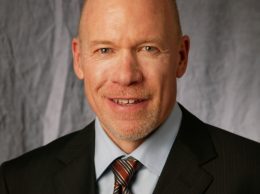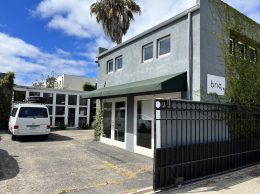State economist cautions that California is still on the mend
IN THIS ARTICLE
- Agribusiness Topic
- Staff Report Author
By Staff Report Thursday, January 23rd, 2014
Santa Barbara County’s economy relies heavily on its billion-dollar tourism and agricultural industries, two of the fastest-growing sectors of California’s economy by number of jobs. But those are also industries with highly seasonal workforces and generally low-paying wages.
Those were the thoughts delivered by Irena Asmundson, chief economist at the California Department of Finance, alongside Peter Rupert, director of the Economic Forecast Project at UC Santa Barbara. The Jan. 22 event was hosted by the UCSB-EFP at Fess Parker’s DoubleTree Resort in Santa Barbara.
Employment in the leisure and hospitality industries has been going up, Asmundson said. “But those tend not to be very well-paying jobs,” she cautioned. “The effect on the rest of the economy is not going to be the same as if they were Google engineers who were then going to go out and hire a whole bunch of waiters and masseuses.”
Also speaking at the event was Kathy Janega-Dykes, CEO and president of Visit Santa Barbara, the tourism marketing group for the area. She pointed to a study the group had released earlier that day that said the cruise ship industry had an estimated $2.4 million economic impact on Santa Barbara last year, with more than 50,000 passengers visiting the city. Those visitors help to support the approximately 12,000 hospitality-related jobs on the South Coast, Janega-Dykes said.
Tourism-related jobs are often entry-level jobs, she said, but they can lead to higher-paying management careers or provide skills to succeed in other industries.
Asmundson said the composition of the California economy is changing. While there are more relatively low-paying jobs in tourism, manufacturing continues a long decline and is “probably not really coming back,” she said.
Rupert said that in Santa Barbara County, employment trends largely tracked those of the state during the recession. But housing prices in the county took a deeper dive, he noted, and while they are trending back up steadily, it’s unclear if they’ll reach their previous peak again. Home sales in the county have also tapered recently after bouncing back.
Unemployment in California has been structurally higher than in the U.S. as a whole, Asmundson said. That’s not necessarily alarming — it can simply be a side-effect of having many “fast-turning” industries such as technology — “but right now, it probably reflects actual weakness,” she said.
The state’s forecasters expect the unemployment rate to have improved slightly in December. California’s unemployment rate dropped to 8.5 percent in November — down from 8.7 percent — and nonfarm payroll jobs increased by 44,300 during the month. The rate will likely show another drop in the report for December, which will be released on Friday, Asmundson said. But many forecasters also worry that the declines are in large part due to discouraged people dropping out of the workforce altogether after battling long-term joblessness. There is a new tax credit in California for businesses that hire people who have been out of work for more than six months, she noted.
“We are still not where we were before the crisis,” she said, with both U.S. and California nonfarm employment struggling to keep up with population gains.
Both economists said that while the graphs predict a continued slow, upward trend for employment and GDP, cyclical trends indicate that the U.S. is due for another downturn. “We’re not seeing inflation or contraction, but it would be really unusual not to see a recession at some point over the next five years,” Asmundson said.
Related Articles
 Wednesday, November 9th, 2022
Wednesday, November 9th, 2022










